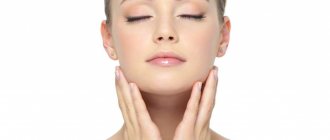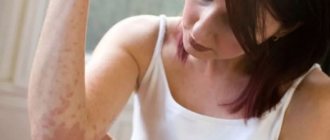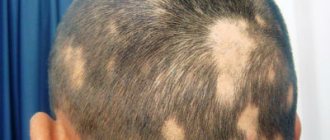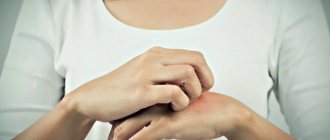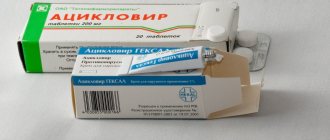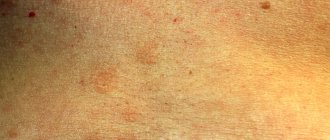Pityriasis versicolor is a fungal infection of the skin with certain symptoms that occurs as a result of the malassezia fungus entering the body. It is often diagnosed in countries and regions with warm to hot climates, which is why it is called beach lichen.
This skin disease appears in adolescents and young adults (it is extremely rarely diagnosed in preschool and retirement age), but people prone to dermatomycosis are also at risk. The disease is long-term and protracted; relapses occur (especially in the hot season, regardless of the region of residence), so it is often called chronic.
Ringworm, like many fungal and viral diseases, is rarely a serious threat to life, but it can indicate health problems and reduce quality of life, especially affecting a person's psychological state.
Coeval with Hippocrates
The name “lichen” (Lichen) has been known since the time of Hippocrates; it includes many skin diseases, which are characterized by the formation of colored spots and peeling. The name “lichen” itself is very arbitrary, since, for example, herpes is popularly called herpes zoster, psoriasis - scaly, etc., but these skin diseases can only be classified as lichen. Different types of lichen are caused by a wide variety of reasons - fungus, virus, but in many cases, reduced immunity is one of the main provoking factors. In this article we will talk about multicolored or, as it is also called, pityriasis versicolor. The causative agent of pityriasis versicolor was described by G. Robin in 1853, and in 1951 M. Gordon identified round and oval forms of the pathogen both in places of pityriasis versicolor rashes and within healthy skin, classifying it as a yeast-like fungus, and proposed its rounded version call Pityrosporum orbiculare.
How to treat lichen on the face
Treatment of any type of lichen on the face involves both getting rid of the cause of the disease and the symptoms.
General measures for the treatment of all types of lichen can be considered:
- antifungal and antiviral drugs;
- antibiotics (erythromycin, penicillin, ampicillin, gentomycin, tetracycline);
- vitamins (groups B, A, D, C and E);
- antiallergic (tablets - tavegil, suprastin, loratadine, diazolin);
- hormonal (ointments - flucinar, lorinden, sinalar, prednisolone, betamethasone, polcortolone, oxycort).
Private treatment methods are presented in the table:
| Disease | Drug and method of administration |
| Shearing superficial | If eyelashes and eyebrows are affected, they need to be plucked. Then an alcohol solution of 0.2% brilliant green (brilliant green) is carefully distributed along the edge of the eyelid. Then an ointment, cream or spray is applied, the main component of which is intraconazole (orungal, itracon) and terbinafine (lamisil, exifin) (for a month and a half). In complicated cases, griseofulvin is prescribed in tablets at the rate of 22 mg per kilogram of body weight. |
| Pink | Here you need acyclovir (200 mg 5 times a day), which is taken orally for 5 days (all except one-year-old children). Salicylic ointment is effective for treating lesions (twice a day). A combination of sulfur ointment and pharmaceutical birch tar, a teaspoon of each (morning and evening), will relieve inflammation. |
| Red flat | Absolutely necessary: hormonal ointments applied two to three times a day (reaferon), vascular preparations (tablets - xanthinol, trental), sedatives in tablets (diazepam), regenerating (solcoseryl ointment), exfoliating (belosalik), antibiotics. Physiotherapy has a positive effect: laser, magnetic and PUVA therapy. |
| Pityriasis | Shampoos for washing the body and face - sulsen and nizoral - with simultaneous intake of fluconazole capsules (three times a day), ointments with zinc and salicylic acid are remarkably helpful. |
| Weeping | In this case, lichen is of particular importance in relieving allergy symptoms with the help of intravenous administration of saline. solution with calcium and magnesium preparations, taking activated carbon tablets. In addition, the following are suitable: baths with sea salt and medicinal mud; cryotherapy; paraffin wraps; medicinal teas and herbal baths; laser treatment. |
| girdling | Acyclovir or famciclovir is used according to the instructions (both in injections and tablets) for a week. Be sure to take painkillers - analgin, ibuprofen. |
| Psoriasis | Cytostatics (cyclosporine) and drugs containing vitamin A - retinol, (isotretinoin), anti-inflammatory, antipruritic, antiallergic ointments (flumethasone, triamcinolone) are taken. Diet and physical therapy are of great importance. |
Fungus loves heat and moisture
Pityriasis versicolor is a disease that is widespread everywhere, but it is more common in countries where the temperature and humidity are high. Young people are affected, and the disease is also registered in children. The risk of lichen versicolor increases in people suffering from excessive sweating, a certain chemical composition of sweat, favorable skin pH for the pathogen, with concomitant diseases: endocrine disorders, chronic diseases of the gastrointestinal tract, as well as immunodeficiency. In recent years, a genetic predisposition to the development of lichen versicolor has been clinically established. Often this disease develops against the background of pulmonary tuberculosis and lymphogranulomatosis, since these diseases are often accompanied by excessive sweating. Transmission of the pathogen from a patient with lichen versicolor or a carrier, for example, in a shared bed, or through shared clothing or underwear, is, in principle, possible. However, most people are carriers of the same fungi that are found on the skin (in areas rich in sebaceous glands) and do not cause disease.
Pityriasis versicolor (tinea versicolor): symptoms
The disease is characterized by the following symptoms:
- the appearance of spots of different shapes, sizes (usually with uneven edges) and colors (white, red, brown, etc.);
- the spots become scaly and may sometimes itch;
- under the influence of the sun, spots can change color and intensity;
- as the disease progresses, the spots increase and unite into large groups;
- Sometimes, if the source of the spot is the scalp, the hair may fall out.
Localization of spots is the chest, back, groin area, arms, legs, less often the face, scalp and genitals. The incubation period ranges from two weeks to several months; in children, the first signs may appear earlier.
Pityriasis versicolor (colored, multi-colored or solar) lichen: causes of occurrence
The main cause of the disease is a fungus that gets on human skin. But there may be several factors that can provoke the active proliferation of this fungus and the appearance of such characteristic symptoms of pityriasis versicolor as multi-colored spots:
- individual (genetic) predisposition to dermatomycosis;
- skin type and/or disruption of the normal functioning of the stratum corneum;
- the presence of concomitant diseases of the endocrine system;
- diabetes mellitus, excess weight, vegetoneurosis;
- increased sweating;
- reduced immunity;
- chronic diseases;
- vegetative-vascular dystonia;
- diseases of the gastrointestinal tract, as well as liver and pancreas;
- respiratory diseases;
- severe stress and constant nervous tension;
- frequent changes in climate and time zones;
- uncontrolled use of medications and cosmetics that are unsuitable for your skin type;
- disturbances of hormonal levels and the functioning of the genitourinary system in women.
The reasons may also be external factors: hot weather or the use of antibacterial personal hygiene products (gels, creams, etc.). But, whatever the cause and no matter how the disease develops, if there are signs of any intensity, you should consult a doctor.
When contracting any skin disease, it is very important to treat not the symptoms, but the causes, while simultaneously getting rid of the existing factors that provoke the disease. This type of lichen may not go away for a long time, and accordingly, treatment may take a long time.
How to treat solar lichen (colored, pityriasis versicolor, multi-colored) and cure it, securing the result for a long time, dermatologists
medical
Modern diagnostic methods make it possible to get rid of the disease and prevent its relapses. An individual course is selected for each patient and maximum attention is paid during treatment to ensure comfort in the fight against an unpleasant disease.
Initial appointment
The initial appointment is an examination, studying tests and complaints to identify the causes that led to infection, as well as drawing up a general clinical picture. In some cases, already at the first consultation, the doctor can prescribe treatment and recommend a course of restorative procedures.
But if the case has any deviations or complications, then it is necessary to prescribe additional studies and consultations with other specialists.
Diagnostics includes:
- skin scraping examination;
- examination of the skin using a Wood's lamp;
- consultations and examinations with specialists such as a gastroenterologist
,
gastroenterologist
and psychotherapist; - examination of the skin using an iodine test.
What exactly the doctor will prescribe and whether any additional research will be needed depends solely on each specific case, as well as the selected methods and drugs for the treatment of pityriasis versicolor (tinea versicolor, solar lichen) in an adult or in children.
Treatment plan
If a course of treatment was prescribed at the patient’s first meeting with the doctor, then at the secondary appointment the doctor assesses the patient’s condition and the effectiveness of the prescribed regimen.
If the selected regimen and drugs for the treatment of pityriasis versicolor (variegated, colored) lichen do not work, then the doctor can either prescribe an additional examination or adjust the previously prescribed course. The doctor also draws up a treatment plan with an individual schedule for subsequent visits.
What can be included in the course of treatment?
Most often, the doctor prescribes:
- antifungal drugs;
- antifungal ointments and gels;
- special shampoos if lesions are found on the scalp;
- antibiotics from the tetracycline group for severe forms;
- topical products with exfoliating and anti-inflammatory effects.
During treatment, it is very important to strictly follow all the doctor’s instructions (take medications on schedule and in the right quantity, follow established rules, etc.), but remember that any deterioration or abnormal reaction of the body must be reported to the doctor so that he can adjust treatment.
Control reception
A follow-up visit to the attending physician's office is scheduled 21–30 days after the start of treatment. This is necessary to assess the patient’s condition after the main course and prescribe a number of restorative and preventive measures. Such measures may include physical therapy, restoration of gastrointestinal microflora, nutritional correction, etc.
Treatment result
The disease can be cured, but the timing of treatment and recovery is individual and is discussed at a doctor’s appointment. Also, if necessary, the doctor prescribes consultations and examinations for all family members, since infections could have occurred through personal hygiene items.
Prevention
A good prevention of this skin disease is:
- observing simple hygiene rules in public places (swimming pools, gyms, etc.);
- maintaining personal hygiene. Personal hygiene items can and should not only be changed frequently, but also constantly disinfected;
- ironing clothes after washing and before wearing (especially for children's underwear and clothes);
- wearing and using clothing and personal hygiene items only from natural materials of good quality;
- temporary avoidance of prolonged exposure to the sun;
- nutrition correction;
- hardening and dousing with acidified water;
- taking vitamins or vitamin complexes;
- compliance with sanitary standards in the apartment and in the workplace;
- individual selection of cosmetic skin care products;
- normal healthy sleep;
- a properly selected system of physical activity and sports to strengthen the immune system and increase the body’s resistance to external influences.
It is also important to exclude all causes that have led or may lead to a recurrence of pityriasis versicolor (colored, multicolored, solar) lichen. Compliance with minimum standards and taking care of your health will significantly reduce the risk of the return of this unpleasant skin disease, and will also bring your psychological state back to normal.
If the disease returns even after treatment and all the measures taken, then it’s time to think about a serious examination by a group of specialists, since inflammation of the skin may be a consequence of diseases that did not manifest themselves in any way before.
To make an appointment for a consultation or appointment with one of the medical dermatologists, you can use a special online form on the website or the phone number listed at the top of this page.
Multicolored leather
Pityriasis versicolor usually begins with the appearance of a small, not very inflamed pink spot that does not rise above the surface of the skin. Sometimes the color may be yellowish or coffee-colored. Gradually, the spot becomes overgrown with “brothers”; they merge into bizarre outlines, forming “geographical” patterns. Elements of multi-colored lichen are located on the skin of the chest, upper back, neck, and shoulders. Against the background of tanned skin, the spots look lighter. The spots tend to merge to form large foci, but can exist in isolation. There are no inflammatory phenomena, there is slight pityriasis-like peeling.
2. Causes of the disease
Pityriasis versicolor is caused by the fungi Malassezia furfur and Pityrpsporum orbiculare.
Their habitat is the stratum corneum of the epidermis.
The causative agent of pityriasis versicolor is conditionally pathogenic, that is, it is transmitted from person to person, but does not cause the disease itself in everyone. The likelihood of infection and the onset of the disease increases by a number of factors - external and internal:
- increased sweating and oily skin;
- vegetative-vascular dystonia;
- high blood sugar;
- treatment with corticosteroids;
- decreased immunity;
- hormonal disorders;
- chronic diseases;
- solar radiation;
- hygiene violations;
- stress and metabolic disorders.
It has been noted that the disease affects mainly people of the middle age group. Children under 7 years of age practically do not get pityriasis versicolor.
Visit our Dermatology page
Independence, which can get in the way
As mentioned above, there are many types of lichen, so you should not try to treat strange spots or rashes that suddenly appear on you. Since the symptoms of some types of lichen are similar to the symptoms of other diseases, consult a dermatologist so that in the process of self-medication you do not trigger the true disease and harm yourself even more. Each type of lichen has its own specific treatment. Some can be cured with special antiviral or antifungal ointments, others require a course of immune restoration, and some even go away on their own. Therefore, if you have lichen, follow only the advice of a dermatologist, and do not try to treat yourself.
Prevention of relapse
The most dangerous time for people at risk is summer. On hot days and when sweating increases, doctors recommend wiping zones X (listed above) with salicylic alcohol. You can prevent the occurrence of lichen at home by using acidified water (lemon juice or vinegar). Antifungal drugs are also a good preventive measure - apply one rad to the epidermis every 2-3 weeks.
You should also adhere to the following rules of conduct:
- do not wear synthetic clothing (only cotton should come into contact with the skin);
- carry out sanitary and hygienic procedures more often;
- exclude intense physical activity and sports;
- Avoid high temperatures and stressful situations.
For people suffering from excessive sweating, it will be extremely difficult to cure pityriasis versicolor without correcting this process. It is recommended to consult a specialist who will help identify the cause of excessive sweating. If you follow the rules, relapses will be rare.
A drop of iodine, a lamp beam, a microscope lens
In our Center, a wide variety of methods are used to diagnose lichen versicolor, one of which is the Balser iodine test: lesions and adjacent areas of healthy skin are smeared with 5% iodine tincture. Rashes due to the loosened stratum corneum are more intensely colored compared to the surrounding healthy skin. Just do not try to perform this test yourself, since only a doctor can diagnose the disease. When examined using a Wood's lamp, a yellow glow is noted in the affected area. Microscopically, in scales taken from foci of pityriasis versicolor and treated with a 15-20% KOH solution, budding fungal cells, as well as pseudomycelium, are detected. Another diagnostic method is the use of Sabouraud’s medium, on which after 3 weeks a white, creamy culture is formed, similar to yeast. Microscopic examination reveals budding fungal cells.
Treatment of erythrasma
To diagnose a patient with erythrasma, a dermatologist first uses a visual examination. This is especially true for rashes in the groin area, which have characteristic distinctive features in the form of pronounced protrusions and bubbles along the edges. Also, the affected areas of the skin are illuminated with a Wood's lamp and a microscopic examination of the scraping is performed to exclude other diagnoses: pityriasis versicolor or pityriasis rosea, candidiasis, dermatitis or eczema.
Treatment of erythrasma is primarily based on the use of antibacterial ointments that are used to treat the affected areas of the skin.
Under their influence, corynebacteria die, and the spots gradually lighten, decrease in diameter and disappear. On average, such therapy takes at least 7-10 days. Used in parallel:
- Antiseptics. Treatment with them is carried out before applying antibacterial ointment, as well as after it, to maintain dryness of the affected areas and prevent re-infection.
- Antifungal drugs. They are prescribed together with antibacterial drugs, since corynebacteria are similar in structure to fungal micelles.
- Exfoliating ointments. They help cleanse the skin of a layer of dead cells, activating its regeneration.
- Ultraviolet irradiation. Promotes skin disinfection and restoration. Patients benefit from both natural sunbathing and physiotherapeutic UV irradiation.
If the disease has not reached an advanced stage, the use of external medications is sufficient to solve the problem. But in some cases, with multiple skin lesions, to obtain the desired result, patients are prescribed systemic antibacterial therapy.
Using effective strokes we “kill” the fungus
If you choose among the many antifungal drugs widely represented on the modern Russian market, then preference should be given to those that, firstly, are able to accumulate in those layers of the skin where the fungal process develops, and secondly, do not penetrate into those layers where fungal activity is impossible. Usually, treatment of lichen versicolor is carried out with local drugs, and in severe cases with the use of systemic antimycotics, which can significantly reduce the treatment time and prevent the frequency of relapses. But you should always remember that if you find signs of a disease in yourself, under no circumstances try to treat yourself, but immediately go to a doctor who will accurately determine your diagnosis and prescribe the right treatment for you.
What is erythrasma
Erythrasma is a chronic bacterial disease affecting the epidermis layer in the deep folds of the skin. It is characterized by a long course - in some cases, symptoms develop for at least 10 years, without causing significant discomfort to the patient. The clinical picture of erythrasma is similar to a fungal infection of the skin, but modern dermatology classifies it as a group of pseudomycoses.
The following main stages are distinguished in the development of the disease:
- Progression. The first characteristic spots appear on the skin, their size slowly increases, and additional symptoms develop. In some cases, secondary infections occur. The spots gradually merge with each other, forming large areas of damage.
- Stabilization. New spots do not appear, and existing ones stop growing. Peeling of the skin begins. This stage is usually associated with a change in external conditions, for example, cold weather, during which the intensity of sweating decreases and the skin condition stabilizes.
- Exacerbation or relapse. Usually associated with the beginning of the warm season. But in the case of prolonged erythrasma, the disease constantly develops in waves, and after a slight decline its symptoms again actively appear.
- Remission. Occurs with a favorable microclimate, compliance with preventive measures and proper skin care. The color of the affected areas gradually returns to normal, itching and flaking disappear, and the skin is restored.
Without timely, well-chosen treatment, erythrasma can lead to the development of serious complications.
For example, it can provoke eczema and secondary infection in patients with diabetes or obesity. Also, the course of the disease is aggravated by increased humidity and contamination of the affected areas. As a result, its typical symptoms are complicated by burning, itching and pain.
General provisions of therapeutic measures for tinea versicolor
The main condition for eliminating tinea versicolor is to contact a dermatologist, since self-prescription of drugs or the use of folk remedies is irrational. Incorrect selection of a course of medications during treatment or non-compliance with the dosage of medications can cause complications or relapse of the disease (repeated skin damage by the pathogen). The use of infusions, ointments, lotions and sprays, which are prepared according to folk recipes, is allowed to a person only after consultation with the attending physician and under his strict supervision.
Treatment of tinea versicolor is carried out strictly under the supervision of a specialist and consists of the use of medications, various ointments, special diets and physiotherapeutic procedures. Medicines are selected for each patient individually, depending on the cause of the fungal infection, the area of development of color pigmentation and the individual characteristics of the patient.
Depending on the degree of infection of the patient by the colored fungus, the method of therapeutic treatment is selected - outpatient (in the absence of a bacterial infection) or inpatient. Specialists use an integrated approach to treatment using local and systemic drugs. Ointments and creams cannot completely remove the causative agent of the disease, since they only have a superficial effect.
Treatment of tinea versicolor requires the dermatologist to prescribe medications and vitamin-mineral complexes to the patient that support the immune system and increase the body’s defenses. To enhance the healing effect of skin affected by lichen, physiotherapeutic techniques are used, which are carried out in the form of ultraviolet irradiation.
Drug therapy
How to treat lichen versicolor on the body is best known to a dermatologist, so at the first suspicion you should make an appointment with him. Treatment is carried out on an outpatient basis; the patient does not need a sick leave. If test results indicate impaired glucose tolerance, he is prescribed a low-carbohydrate diet. The patient should give up sweets, sugary drinks, some fruits, white bread and pastries, and consume potatoes, corn and white rice sparingly.
Treatment of tinea versicolor in humans is carried out:
- Keratolytic drugs that disrupt the connections between horny scales. This accelerates the renewal of the upper layers of skin, releasing the pathogen.
- Antimycotic agents that disrupt the life cycle of the fungus and prevent the spread of mycelium.
An antifungal cream or spray should be applied to affected areas twice a day for seven days. Typically, such a course of treatment completely eliminates the manifestations of the disease. Its disadvantage is that antifungal drugs are highly toxic.
An alternative treatment regimen includes the use of a keratolytic and natural antifungal drug to treat the damaged epidermis. An excellent remedy is a two percent alcohol solution of salicylic acid. After applying it, the affected areas should be lubricated with iodine or Fukortsin.
A mixture of salicylic acid, alcohol and resorcinol has a good therapeutic effect. Prescriptions are filled in state pharmacies. Boric acid in a 4% solution, which penetrates deeply into damaged tissues, prevents the growth of mycelium. But it cannot be used to treat children and pregnant women due to toxic effects.
Treatment using the Demyanovich method includes treating the skin with one of the following drugs:
- benzyl benzoate (20% solution);
- sulfur-salicylic ointment (10% solution);
- sodium hyposulfite (60% solution).
After them, the foci of the disease should be lubricated with a 6% solution of hydrochloric acid, which has a pronounced antifungal effect.
When widespread skin lesions or persistent recurrent course of the disease occur, the doctor prescribes two-week systemic treatment with Intraconazole tablets. If effectiveness is low, therapy can be repeated after a 14-day break
This drug should be used with caution in patients with liver disease
How to treat the disease?
There are a number of ways to combat the disease. You can be treated with both medications and alternative medicine.
Drug therapy
In some cases, pityriasis versicolor in humans disappears on its own. But proper treatment will help speed up the healing process. The basis of drug therapy is the following drugs:
- Antifungal ointments - Dermazol, Kanizon, Ecodax, Mycozon, Exoderil. Such drugs have a detrimental effect on the pathogen.
- Ointments to eliminate symptoms - Salicylic ointment, Glycolic acid, resorcinol alcohol. The products help soften the skin - the affected cells begin to separate, and a healthy epidermis is restored.
- Antifungal tablets - Oronazole, Nizoral, Flucostat. They are used in cases where local therapy does not provide positive dynamics for recovery.
- Shampoos - Keto Plus, Nizoral. Used when lichen spreads to the scalp.
Important! Medicines for pityriasis versicolor are used only after the prescription of a dermatologist, who also determines the dosage.
Traditional treatment
In addition to medications, you can treat with folk remedies. The most effective recipes:
- Snapdragon. You will need 2 tablespoons of snapdragon flowers and a little butter. Chop the plant, add softened butter, mix thoroughly. Apply the prepared ointment to the affected areas of the skin on the face.
- Blueberry. Boil the blueberries and grind them to a paste consistency. Apply it to the lichen.
- Raisins and prunes. You need to take the ingredients in equal proportions and grind them through a meat grinder. Wipe your face with the prepared mixture.
- Onion. It is necessary to chop the onion well and squeeze out the juice through cheesecloth. Treat emerging stains with liquid several times a day.
- St. John's wort. Pour 2 tablespoons of dried St. John's wort into 1 cup of boiling water and leave for 1 hour. Wipe the affected areas of the skin with the prepared infusion.
Important! Folk remedies are used only as an additional method of treatment. They cannot eliminate fungal activity on their own.
Diet
To quickly get rid of multicolored lichen, you should adhere to proper nutrition. The daily diet should be filled with the following products:
- dairy and fermented milk products;
- green vegetable salads;
- greenery;
- healing mineral water;
- iron-fortified foods;
- buckwheat, rice, oatmeal;
- honey.
Foods that are not recommended for illness include:
- smoked products;
- spices;
- pickled and salty dishes;
- meat and fish of fatty varieties, this also includes strong broths based on them;
- fast food;
- canned food;
- spicy dishes;
- legumes;
- sweets;
- alcohol.
In addition, it is necessary to minimize the consumption of strong tea and coffee.

